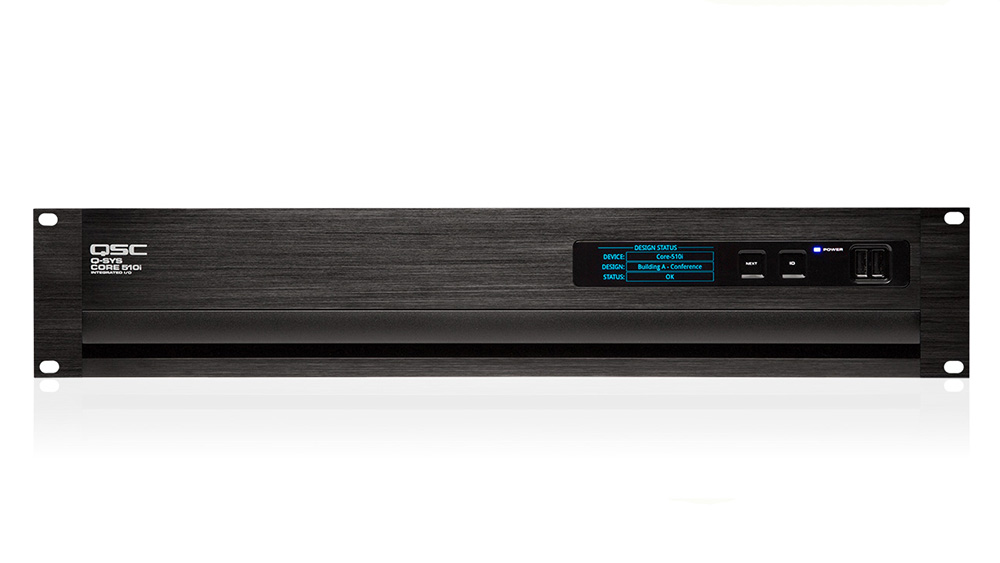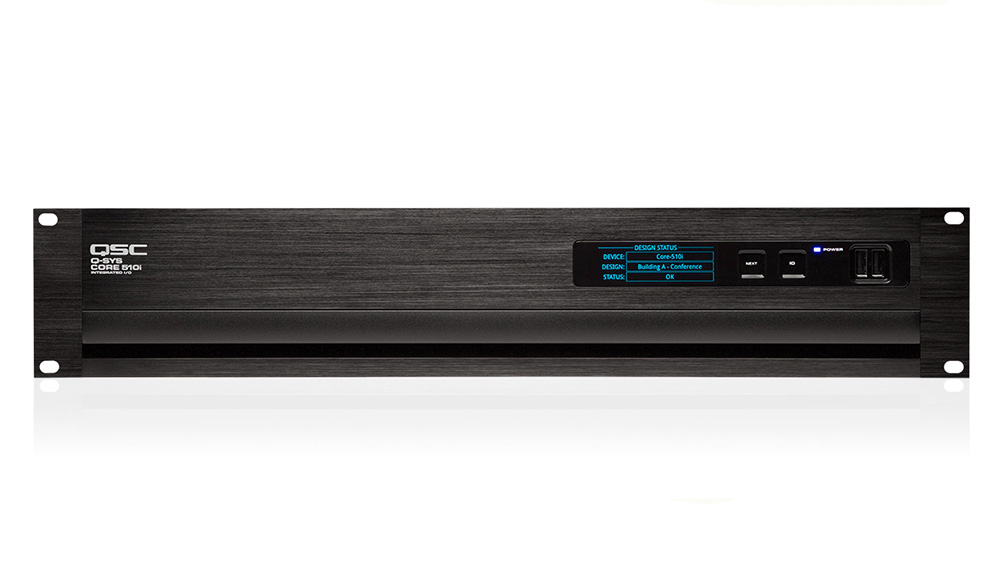The What: QSC has launched the Q-SYS Core 510i Integrated Core processor. An evolution of the Q-SYS Platform, the Core 510i processor leverages the latest Intel platform using a QSC-developed Linux realtime operating system (RTOS) for a powerful audio, video, and control (AVC) solution.

The What Else: Unlike other Q-SYS processors, the Core 510i can be deployed in two different software configurable modes: Q-SYS Core mode, which handles all AVC processing including extensive resources for built-in acoustic echo cancellation (AEC) that can be deployed with the new Q-SYS AV-to-USB Bridging solution for soft codec conferencing applications; and I/O Frame mode, for support of up to 128x128 audio channels as an I/O peripheral into the Q-SYS system for processing on a separate Q-SYS Core processor. It can accommodate any combination of Q-SYS Type-II I/O cards including Dante, CobraNet, AVB, or Q-SYS analog and AES/EBU cards.
“The introduction of the Core 510i is a natural extension of our platform,” said Martin Barbour, product manager for QSC Systems. “Taking advantage of the newest Intel chipset allows us to leverage Moore’s Law and offer an even more powerful processor without impacting cost. As the industry moves towards a more IT-centric world, Q-SYS makes the most sense for enterprise deployments utilizing shared resources for multiple meeting rooms or even very large conference spaces.”
With the recent release of Q-SYS Designer Software v5.3, all Q-SYS Core processors shipped to date, including the Core 510i processor offer native AES67 capability without the need for any additional hardware or license costs. Like other Q-SYS solutions, the Core 510i processor offers multiple levels of system redundancy allowing the designer to choose the most appropriate redundancy scheme for the project at hand.
The Bottom Line: The Core 510i processor offers the most flexible audio I/O configuration options of any processor in the Q-SYS catalog, with card-based I/O as well as native Q-LAN network channel and AES67 capabilities. It is well suited for applications that require a diverse mixture of analog, digital, and networked audio connectivity, including mid- to large-sized meeting spaces and hospitality applications.
